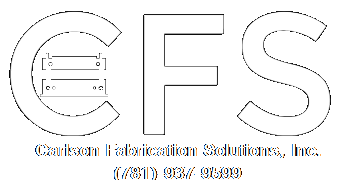There are many industries that have many different uses for press brakes. Bending sheet metal, for instance, is used in any industry that uses metal processing—for example, in aerospace, building the infrastructure and parts of a jet require many different types of metal to be bent in various ways. Even health tech needs metal bent for large medical devices. Home jobshops and people who build custom cars use press brakes (smaller ones, albeit) that can bend parts of their car frames and create custom pieces for their workpieces.
Let’s use press brake automation in aerospace, for example. Jet parts need to be highly customized, precise, and very efficient. Without human intervention and human error, both time and defect rates are spared tremendously by automating the tool changing process. With lower defect rates, the amount of excess material used goes down as well, as the machines make much less mistakes on average. Without the need to train employees as extensively (and provided that Mitsubishi provides it for free), the amount of fixed costs for operating go down substantially. With all the cost savings, it’s only a matter of time before the whole industry moves into this automation.
Regardless of the use of press brake, there are many options that are available on the market. However, when looking for something that will cover a large operation, there are tremendous cost efficiencies associated with automating the press braking process.
Automated Tool Changing (ATC)
When it comes to cost effectiveness, automatic tool changing can be highly beneficial. Not only does it cut out the manual process of switching over tooling between jobs, but will give real-time statistics and cloud-based machine insights. Not only can your business save much-needed capital on labor, but can keep uptime—for automation can run all day, every day.
Let’s break it down here:
If you have one operator on a press brake whose responsibility is to change the tooling on the machine, you can reasonably expect this person spend about 3 hours of their day on ~9 setups. Consult the below picture:
If you look at it this way, the 7 hours spent on setups would be 1 with the ATC. Not only the time, but the cost savings would be substantial – for there would not be a need of excess labor or employees. Not only does the ATC save time, but also labor, training and many various costs as well.
Along with optimizing workflow to save time, money, and human effort, your business can avoid and actively prevent costly downtime and product defects. Without human intervention, parts become standard and your business becomes (literally) a well-oiled machine. Mitsubishi ATC press braking provides unmatched programmability, functionality, and real-time, cloud-based machine insights. Whatever the challenge, there’s an automation solution that can help.
Mitsubishi is one of the best companies in the world for automation, and this product truly shows what they are capable of. Not only will their state-of-art robotics outmatch any competitor, but their attention to business needs and cost savings highlight how much value their automation can add to your business.
Learn more about Mitsubishi’s Automatic Tool Changing (ATC) —>
If you have any questions about automatic tool changing for press brakes, please contact us at Carlson Fabrication Solutions at info@carlsonfab.com or at (781) 937-9599.



